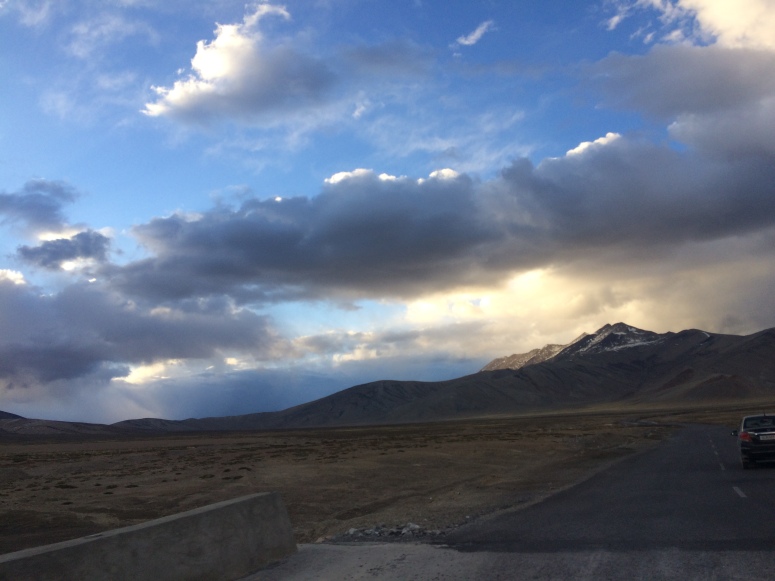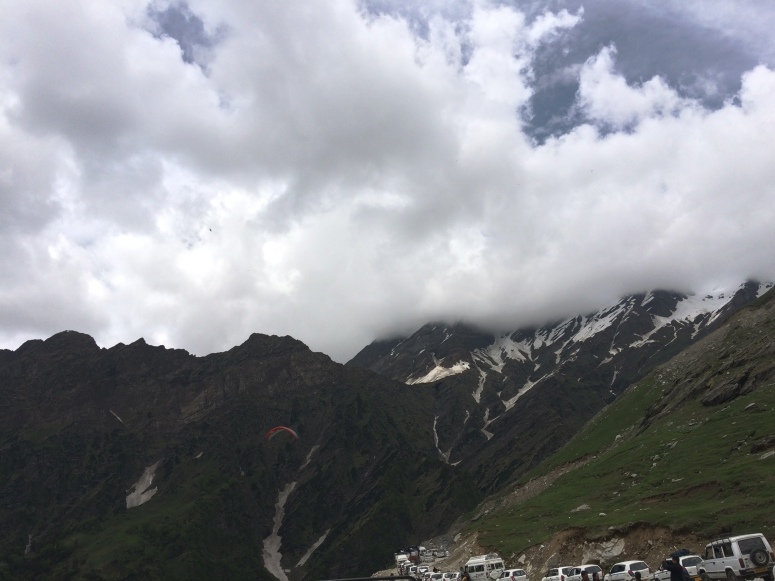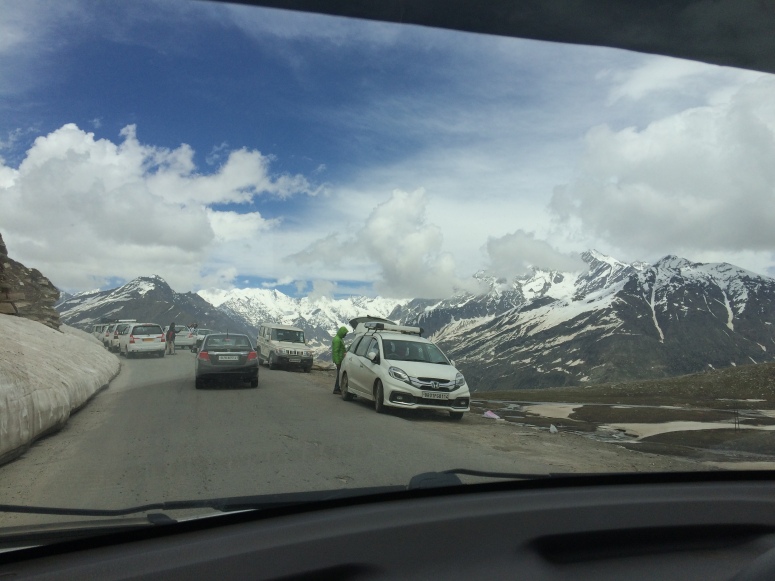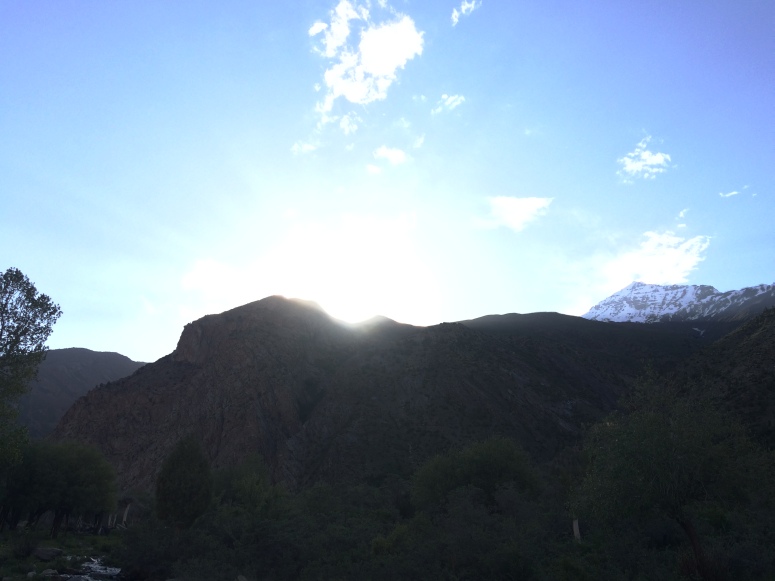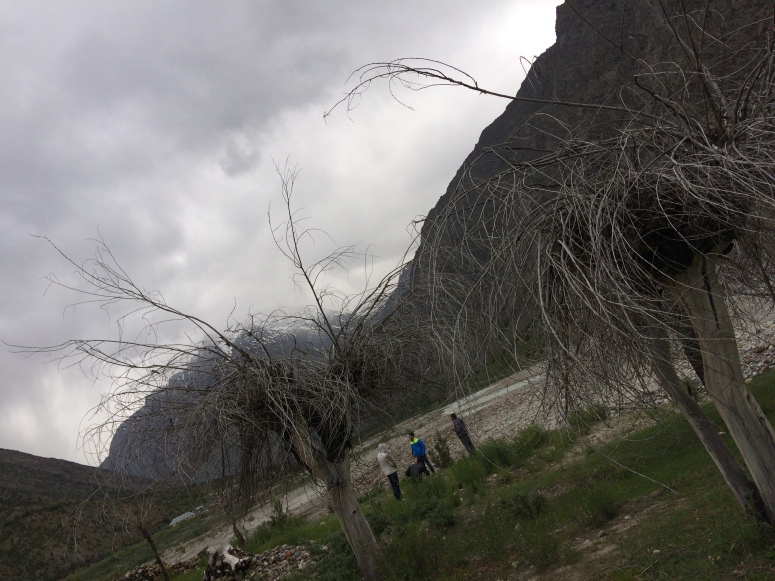Part 1: Trivandrum & Poovar backwaters
A houseboat is a pleasant affair, to put it mildly. Right from the outset, the well-natured crew of three made us feel at home, taking us along the coconut-tree horizon shore (which is ubiquitous on the Kerala logos and T-shirts, having seeped into popular culture as a representation of ‘God’s Own Country’ – with good reason) and near an island which lay just off the shoreline. Family pics were done above the prow, on the upper deck.

I got some great shots of the setting sun, including one in which the shoreline was reflected in the metal of the spheres that topped the guardrail posts, and the V’s of birds returning inshore to nest, long trails of black, fluttering wings making a beeline for their nightly haunts. Pynchon shows up everywhere, doesn’t he?
As dusk fell, we moored at one of the crew’s native village, going ashore to check out the sole handicraft shop and fish hut – just three freezers with prawns and fish. Selecting a tiger prawn was a no-brainer, along with some flattish fish for frying – I forget the name. I guess it is more than possible to identify it from its edible incarnation from the picture, but I am somehow less than inclined to do so.


The ocean sky at night is a wondrous sight, especially on cloudless nights such as the one I was fortunate enough to witness from the deck of the houseboat. Constellations are apparent, and the pinpoint stars bring to mind both Carl Sagan’s views on our perception of our significance in the vast universe as well as Incubus’s Wish You Were Here: “…the sky resembles a backlit canopy with holes punched in it…”
Satisfied with a restful night’s slumber, we awoke to a hearty breakfast laid out for us. I entered the appreciative comments I could think of on the spur of the moment into the guest book offered by the crew, and we reversed into the backwaters for the concluding leg of our southern sojourn towards Kochi.
Resuming our road trip with Saji, we passed variously-sized towns en route Kochi. A moment of serendipity, which is always admirable once experienced, made me glance up and catch sight of “Palakandi farms”, reminding me of a long-time school friend with Keralite and Italian heritage.
Kochi stands out with its brand new shiny Metro. After a meander through one of the malls for southern silk sarees, we left the city part (Ernakulam) and headed to Fort Kochi. Worth noting here that the mall entrance was framed by two tall multi-tiered dweepams with a Ganesha idol in the middle, and that the saree mall was on the ubiquitous M G Road in most Indian cities.
Crossing a bridge or two, we alighted near the Chinese fishing nets.

The graffiti on the exterior of the Cochin Aquatic Club was diverse, to say the least. A couple of signs marked out a neighboring restaurant-lined street as either Princes or Princess Street.
I’ll need to consult botany-savvy friends/people to identify the tree with huge, round fruit and large, open-petaled red flowers. We sauntered into Bastion Bungalow, home to the Ernakulam District Heritage Museum. A performance under the aegis of SPICMACAY was scheduled there, reminding me inescapably of their astoundingly mesmerizing performances at Sanawar.
A couple of photo opportunities presented themselves: Mom’s head got framed by stark (Marvel shout-out) tree branches forming a crown reminiscent of Hela from Thor:Ragnarok (incidentally played by Cate Blanchett, Galadriel in the Lord of the Rings’ film adaptation and an Australian thespian – I have a high affinity for all things Down Under). Also, a chameleon sunned itself atop the barrel of an ancient cannon still mounted on the Bastion’s rampart, facing the sea.

A truly beautiful graffiti of angel wings led to a Hulk pose for juxtaposition of power with purity.

We visited the church where Vasco da Gama was interred before his remains were taken to Portugal.

Coming back to the main part of Fort Kochi for a tour of the Dutch Museum, I espied a sign proclaiming the world’s largest varpu, a vessel made of metal. On that pursuit, I walked through the Jew town and crossed the Pepper & Spice Trade Association office.
The airport was a breeze as usual and I spiraled back to The Hitch Hiker’s Guide to the Galaxy with this reminder in the in-flight magazine:

Read ahead for Tirthan Valley










































